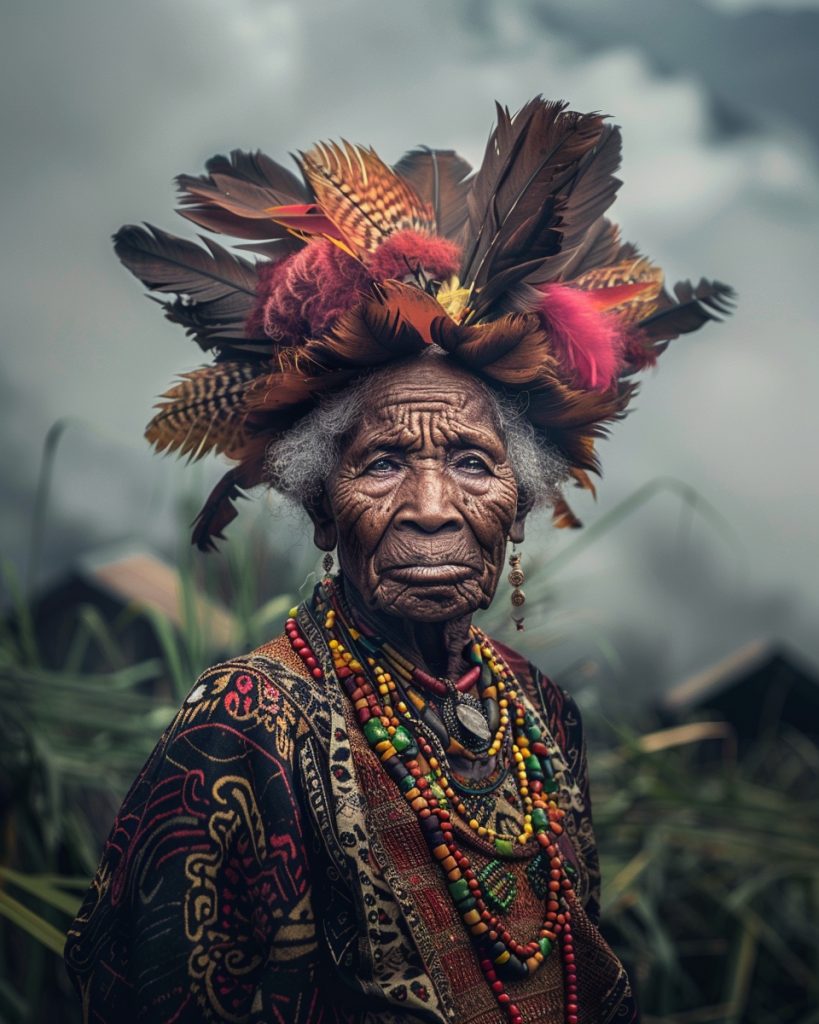In the remote highlands of Papua, Indonesia, a peculiar tradition once thrived among the Dani tribe. The practice of finger amputation, known as Ikipalin, served as a haunting expression of grief and loss.
Women of the tribe would voluntarily sacrifice portions of their fingers when a loved one passed away, creating a visceral embodiment of their emotional pain.
The Ikipalin ritual involved cutting off the top joint of a finger using a stone axe, with the amputated part burned and buried as an offering to appease ancestral spirits.
This practice, now largely abandoned due to government intervention, left many older Dani women with shortened fingers – a permanent reminder of their departed family members and friends.
The ritual’s significance extended beyond mere mourning, representing the tribe’s complex relationship with death, spirituality, and communal bonds.
The Dani tribe’s finger cutting custom offers a window into the diverse ways human societies cope with loss and express grief. It challenges our preconceptions about pain, sacrifice, and cultural norms, inviting us to explore the intricate tapestry of human rituals and their profound impact on individuals and communities.
Cultural Context of the Dani Ritual
The Dani tribe’s finger-cutting ritual, known as Ikipalin, embodies profound cultural significance rooted in grief, spirituality, and communal bonds. This practice reflects the tribe’s unique worldview and serves as a powerful expression of loss and remembrance.
Historical Genesis of Finger Cutting
The origins of Ikipalin trace back to ancient Dani traditions, evolving alongside their complex belief system. This ritual emerged as a visceral response to death, allowing tribe members to physically manifest their emotional pain.
Over generations, it became deeply ingrained in Dani culture.
The practice gained prominence during periods of increased tribal warfare and natural disasters. As mortality rates rose, so did the frequency of finger amputations.
This correlation highlights how external pressures shaped cultural practices.
Interestingly, finger cutting was primarily performed by women, reflecting gender roles within the tribe. Men, conversely, expressed grief through other means, such as tribal warfare or ritualistic body modifications.
Symbolism in the Dani Ritual
The Ikipalin ritual carries layers of symbolism within Dani culture. At its core, it represents a physical manifestation of emotional anguish. The act of cutting serves as a tangible reminder of loss, etched permanently on the body.
The severed finger is believed to symbolize unity with the deceased. This connection between the living and the dead reinforces the Dani belief in an interconnected spiritual realm. The pain experienced during the ritual is seen as a way to honor the departed.
Fascinatingly, the number of amputated fingers often correlates with the individual’s perceived closeness to the deceased. This gradation of sacrifice adds nuance to the ritual’s symbolism, reflecting the complexity of human relationships.
Anthropological Perspectives
Anthropologists have long been intrigued by the Dani’s finger cutting ritual, viewing it through various theoretical lenses. Some interpret it as a form of social control, reinforcing tribal bonds through shared trauma. Others see it as an extreme manifestation of grief processing.
The ritual challenges Western notions of body integrity and pain avoidance. It raises questions about cultural relativism and the diverse ways societies cope with loss.
Researchers have drawn parallels with other cultures’ mourning rituals, revealing common threads in human grief expression.
Modern anthropological approaches consider the ritual’s evolution in the face of external pressures. As the practice becomes rarer due to official bans, questions arise about cultural preservation versus human rights concerns.
Implications and Controversies
The Dani finger-cutting ritual raises complex questions about cultural practices, body autonomy, and the preservation of traditions in a rapidly changing world. It challenges our understanding of grief expression and the limits of body modification.
Modern Views on Body Modification
In contemporary society, the Dani finger amputation ritual stands in stark contrast to mainstream body modification practices.
While tattoos and piercings have gained widespread acceptance, permanent alterations like finger removal remain taboo in most cultures.
The ritual prompts us to question the boundaries of self-expression through bodily changes. It invites reflection on how different societies cope with loss and manifest emotional pain physically.
Anthropologists argue that the practice, known as Ikipalin, serves as a powerful symbol of communal grief. Yet, it also raises concerns about long-term health implications and functional impairment.
Ethical Considerations
The finger cutting tradition presents a moral dilemma for outsiders.
On one hand, there’s a strong argument for cultural relativism and respecting indigenous practices. On the other, concerns about human rights and bodily integrity come into play.
Critics argue that the ritual perpetuates harm, particularly to women who are the primary participants. They question whether individuals truly have free choice in a society where such practices are deeply ingrained.
Defenders of the tradition point out the hypocrisy of Western societies that accept other forms of body modification while condemning this particular practice.
They argue that outsiders lack the cultural context to fully understand its significance.
The debate extends to questions of cultural preservation versus modernization. As the Dani tribe faces increasing contact with the outside world, the future of this ritual remains uncertain.

